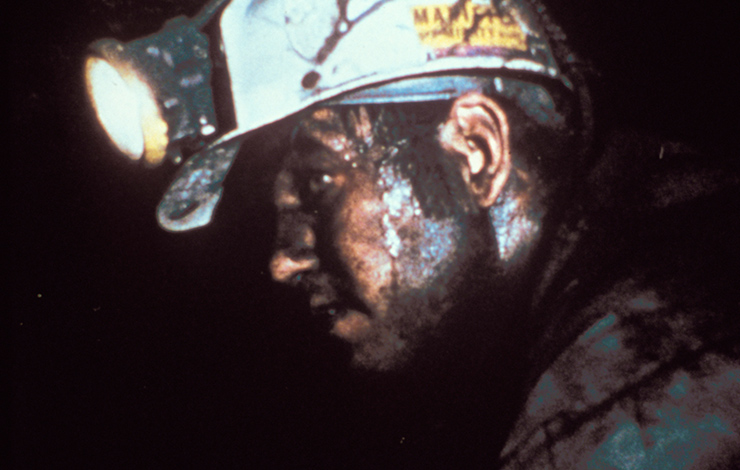
From Barbara Kopple's Harlan County USA
The jolting power of Harlan County USA (1976) begins within minutes of its claustrophobic opening, as miners belly-flop onto a narrow conveyor belt sucking them into the clammy blackness of the mines. Arm's length is not director Barbara Kopple's style; she puts us right alongside these Kentucky miners and their families, striking Harlan County's Brookside mine in 1973 for the right to join the United Mine Workers of America (UMW).
Notes in the Criterion Collection's immaculate DVD of the film, issued on its 30th anniversary, point out that it's "still the only nonfiction film to have played the New York Film Festival, won an Academy Award and been [listed] in the National Film Registry." Harlan County's commercial success may even have made unionizing bankable: in its wake came Matewan, the (relative) grit of Coal Miner's Daughter and Norma Rae.
Kopple lets us meet these unwavering, resilient men and their wives the way she didin their leaky shacks with no plumbing and no electricity, toughing it out with banked fury and dry, occasional humor on their first-ever strike, month after tedious, dangerous month.
The film's vivid personalities begin to emerge: shy Sudie Crusenberry goes from tongue-tied to eloquent; organizer Lois Scott, squinting through her cigarette smoke, rallies the women with a mix of hard facts and gusts of humor until, almost to their own surprise, these once-deferential wives defuse a daylight, drawn-gun confrontation.
For the film's backbone, Kopple chose bluegrass songs of faith in the union: the haunting ballads of Appalachian-born Hazel Dickens; the astringent laments of miner/songwriter Nimrod Workman; and the definitive workers' anthem sung here by its writer, Florence Reese, absolutely certain for more than 80 years which side she's been on.
The miners' story builds like three-act drama, and having gotten our attention, Kopple backtracks to fill in the labor history of "bloody Harlan County" throughout the 1930s and the recent, no-less-bloody saga of the UMW under the corrupt leadership of Tony Boyle. Watching newsreels of the bragging, messianic Boyle being arrested for arranging the killing of his UMW presidential rival Jock Yoblonsky and his wife and daughter is like watching a third-world tyrant brought down. Kopple saves the bittersweet progress of Boyle's well-intentioned "reform" successor, Arnold Miller, for her epilogue.
As the strikers' story ricochets toward the tragedy that ends management's hopes of holding out forever, it's clear that the filmmakers' presence was crucial. Joining the picket lines every daybearing witness, cameras turning (full or empty)they become a deterrent...of sorts. Nevertheless, one terrifying pre-dawn, Kopple and Hart Perry, her cameraman, were singled out and beaten by company thugs.
In contrast, the film's most surreal and telling moment comes when a placard-carrying mineron Wall Street to picket parent company Duke Power's annual stockholder's meetingand a Brooklyn cop trade jaw-dropping details of each man's base pay and benefits.
A DVD extra makes it clear that Harlan County is, regrettably, timeless. During the film's 30th anniversary panel at Sundance, Kopple invited long-striking Utah miners to speak; they were protesting wages of $7 an hour, when the national contract average was $15-$17. Since then, one Utah mine has become a tomb. Which side are you on?
